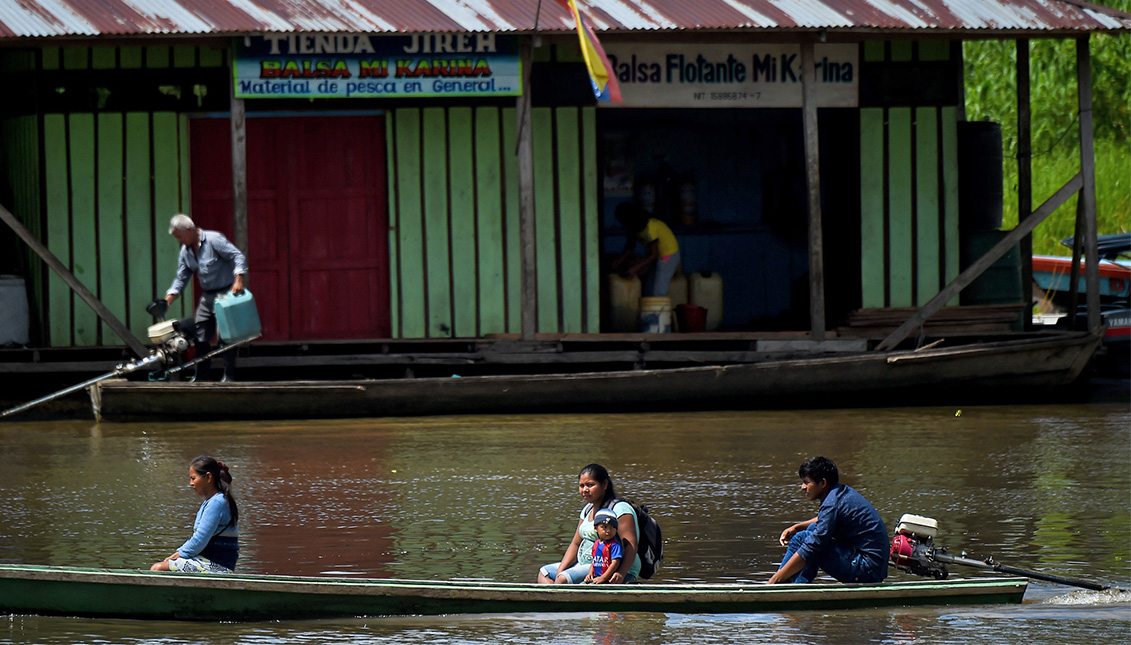
The Amazonian 'prostibars': Human trafficking exploits more indigenous women in times of COVID
The border between Colombia, Brazil and Peru has become a limbo for the illegal trafficking of drugs, natural resources and, yes, human beings as well…
In the quiet municipality of Puerto Nariño in Colombia, river cruises sailed all the time to take tourists to see pink dolphins. A paradise vacation destination located in the Amazon Triple Frontier on the banks of whose river the students of the Indigenous Boarding School of San Francisco de Loretoyaco would walk after school, while the older men invited them to sail with them, promising fun and gifts.
This is how they fished before the pandemic began, often simply by local men who captured the girls to be exploited in the hostels that abound, believe it or not, in this jungle region bordering Atalaia da Norte in Brazil and Caballococha in Peru.
Moving freely between countries in this free zone for human trafficking is extremely easy thanks to the Amazon River. With the arrival of the pandemic and the closure of borders, it was thought that there would be much more security, but the mafias have found a loophole to intensify their exploitation of the forest and its inhabitants, inactive now that businesses and schools are closed and tourism is living its lowest days, and, above all, desperate.
The Pan-amazonian "prostibars" are more thriving businesses even during confinement and are run by coca traffickers who often count, according to journalist Ana Palacios, on the voluntary blindness of local governments.
"I once visited a mining region where we counted 11 brothels within 1.5 km and then we were informed that in each one of them there were eight to 10 young girls, most of them minors," said Catholic University of Costa Rica professor Ariana Díaz Acuña during a digital meeting. Díaz Acuña also pointed out that although not all women in the Pan-amazonia are indigenous, many are victims of human trafficking, violence and sexual exploitation.
RELATED CONTENT
While Fany Kuiru Castro, a member of the Murui community and coordinator of the Women, Children, Youth and Family section of the Organization of Indigenous Peoples of the Colombian Amazon (OPIAC), emphasized the important work that groups like hers are doing in indigenous communities in the Amazon to empower and prevent women from becoming victims of sexual exploitation.
"Our work is to make indigenous women aware of their rights, to food sovereignty, to healthy food and to the enjoyment of their economic, social and cultural rights," said Fany.
The same is true of Nathalia Forero, coordinator of the RETP-Trafficking in Persons Network in the Triple Frontier and former student of the Loretocayo boarding school, who saw not only situations of sexual abuse and exploitation, but also of slave labor. More than that, she realized that "many situations of abuse and exploitation had become naturalized as part of a subsistence economy," she said.
"We saw that it is essential to network, independently but thinking of the Amazon as a connected whole," concluded Forero, who works side by side with other activists so that the Amazon's Triple Frontier is no longer a place where survival is synonymous with violence and oppression.











LEAVE A COMMENT: